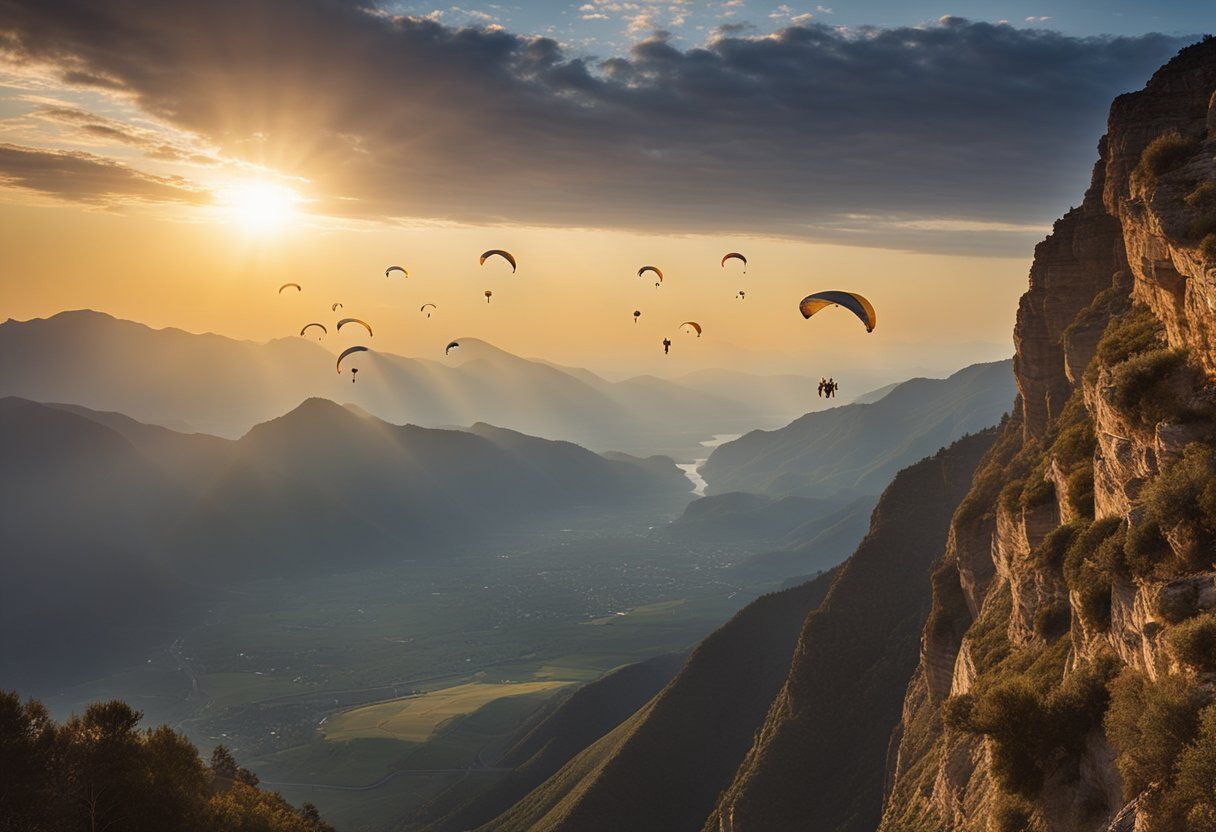To share
Maximize your Larapinta Trail experience with our comprehensive seasonal guide. Learn about temperature fluctuations, wildlife encounters, and scenic highlights throughout the year. Choose the best time for your Larapinta Trail hike!
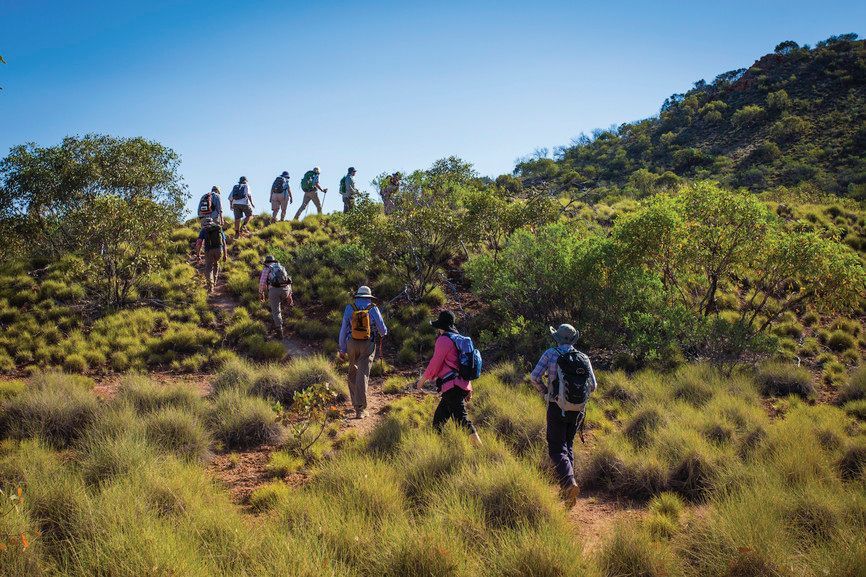
1. Understanding the Larapinta Trail
Overview of the trail's location and length
The Larapinta Trail is a long-distance hiking path located in the Northern Territory of Australia. It stretches for approximately 223 kilometers (139 miles) through the West MacDonnell Ranges, starting from Alice Springs and ending at Mount Sonder. The trail is divided into 12 sections, each offering unique landscapes and challenges.
Brief history and cultural significance
The Larapinta Trail was officially opened in 2002, but the land it traverses has been home to the Western Arrernte Aboriginal people for thousands of years. The trail's name, "Larapinta," comes from the Arrernte word for the Finke River, which the path crosses. Along the route, hikers can observe ancient rock art and culturally significant sites, providing a deep connection to the area's rich indigenous heritage.
Terrain and difficulty levels
The Larapinta Trail presents a variety of terrains, including rocky ridges, sandy creek beds, and spinifex-covered plains. The difficulty level varies across different sections, ranging from easy walks to challenging climbs. Some parts require scrambling over loose rocks and navigating steep inclines. The trail is generally considered moderate to difficult, requiring a good level of fitness and proper preparation.

2. Seasonal Climate Patterns in Central Australia
Summer (December to February)
Summer in Central Australia is characterized by extreme heat, with daytime temperatures often exceeding 40°C (104°F). This season presents significant challenges for hikers due to the risk of heat exhaustion and dehydration. Water sources along the trail may be scarce or dry during this period. Many experienced hikers avoid the Larapinta Trail during summer due to these harsh conditions.
Autumn (March to May)
Autumn brings milder temperatures to the region, with daytime highs averaging around 28°C (82°F) and nighttime lows of about 12°C (54°F). This season offers more comfortable hiking conditions compared to summer. The landscape begins to change color, and there's a higher chance of occasional rainfall, which can create beautiful wildflower displays. However, hikers should still be prepared for warm days and carry adequate water supplies.
Winter (June to August)
Winter is often considered the ideal time to hike the Larapinta Trail. Daytime temperatures are pleasant, typically ranging from 18°C to 23°C (64°F to 73°F). Nights can be cold, with temperatures sometimes dropping below freezing. The clear, sunny days and cool nights provide excellent hiking conditions. Water sources are generally more reliable during this season. However, proper cold-weather gear is essential for overnight camping.
Spring (September to November)
Spring in Central Australia sees gradually warming temperatures, with daytime highs increasing from about 27°C (81°F) in September to 35°C (95°F) by November. This season offers a balance between the cooler winter and the extreme heat of summer. Spring can be an excellent time for hiking, especially in September and October. However, as November approaches, the heat begins to build, and hikers should be prepared for warmer conditions.
"The Larapinta Trail offers a unique adventure through the heart of Australia's Red Centre, but choosing the right season is crucial for a safe and enjoyable experience."
3. The Ideal Season: Winter (June to August)
Comfortable daytime temperatures
Winter on the Larapinta Trail offers hikers the most pleasant daytime temperatures. During this period, average temperatures range from 20°C to 25°C (68°F to 77°F), providing ideal conditions for extended walks without the risk of overheating. The cooler weather allows hikers to cover more ground comfortably and enjoy the stunning landscapes without excessive perspiration or fatigue.
Clear skies and stargazing opportunities
One of the highlights of winter hiking on the Larapinta Trail is the consistently clear skies. The dry season brings minimal cloud cover, offering unobstructed views of the surrounding terrain during the day and breathtaking stargazing opportunities at night. The lack of light pollution in this remote area makes it an excellent location for astronomy enthusiasts to observe constellations, planets, and even the Milky Way.
Water availability and conservation
While winter is the driest season, most reliable water sources along the Larapinta Trail remain accessible. However, hikers should still practice water conservation and carry adequate supplies between known water points. It's advisable to check with local authorities or experienced guides about the current water conditions before embarking on the trail. Some hikers find that the cooler temperatures of winter reduce their overall water consumption compared to warmer months.
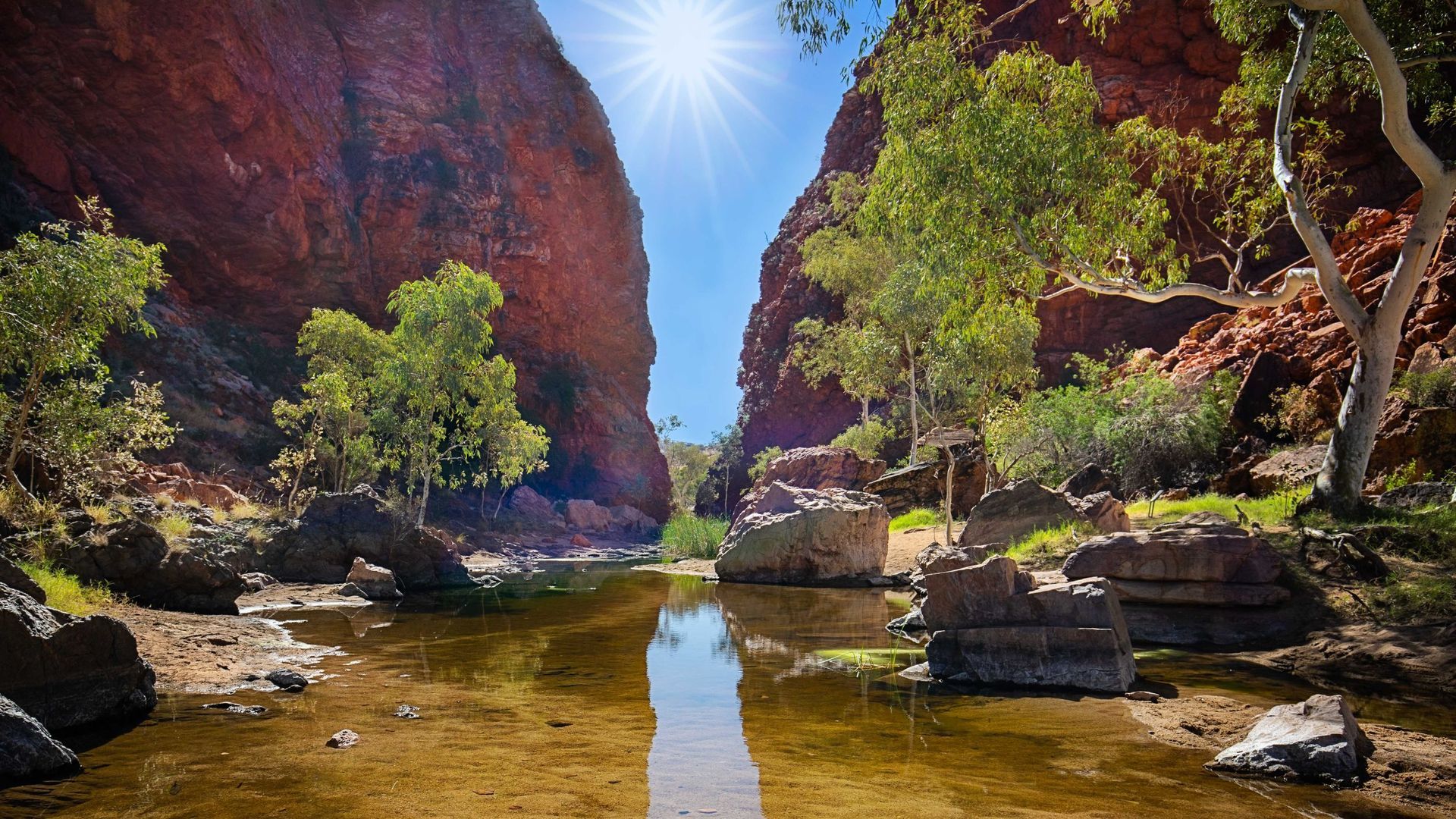
4. Shoulder Seasons: Spring and Autumn
Spring hiking conditions (September to November)
Spring brings a gradual increase in temperatures and the possibility of occasional rainfall. Daytime temperatures typically range from 25°C to 30°C (77°F to 86°F). This season offers the chance to witness the desert landscape come to life with blooming wildflowers and increased wildlife activity. However, hikers should be prepared for potentially warmer afternoons and carry extra water.
Autumn hiking conditions (March to May)
Autumn on the Larapinta Trail is characterized by mild temperatures, similar to spring, with daytime highs between 25°C and 30°C (77°F to 86°F). The landscape takes on warmer hues as the summer heat subsides. This season often provides stable weather conditions, making it a popular choice for hikers who prefer a balance between comfortable temperatures and fewer crowds than the peak winter season.
Pros and cons of hiking during transitional seasons
- Pros:
- Fewer hikers on the trail compared to the peak winter season
- Opportunity to experience changing landscapes and wildlife behaviors
- Generally stable weather conditions, especially in autumn
- Cons:
- Higher chance of unpredictable weather patterns
- Potentially warmer afternoons requiring extra water and sun protection
- Some water sources may be less reliable, particularly in late spring
"Hiking the Larapinta Trail during shoulder seasons offers a unique experience, but requires additional preparation and flexibility in your itinerary to account for varying conditions."
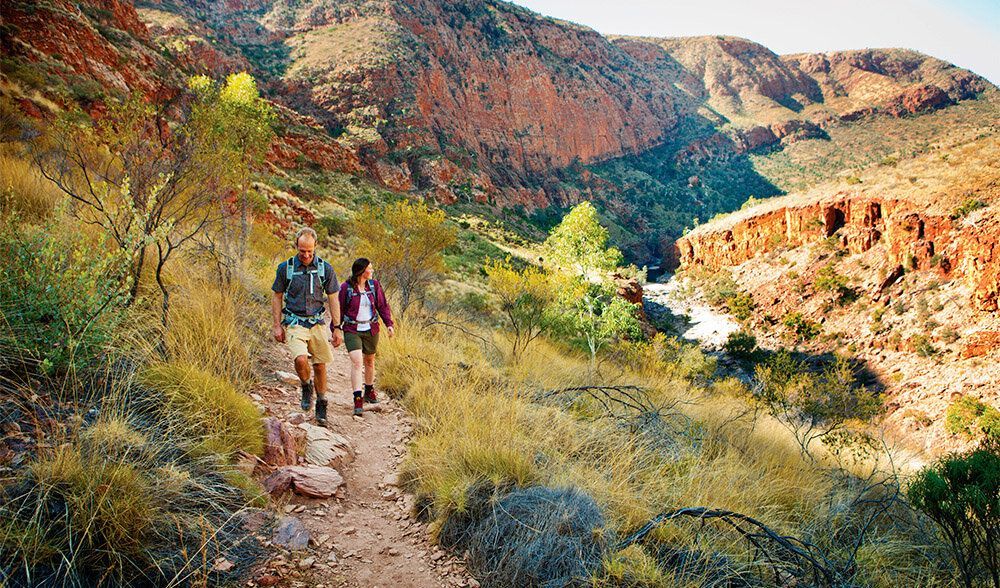
5. Summer Hiking: Challenges and Precautions
Extreme heat and its risks
Summer in Central Australia brings scorching temperatures, often exceeding 40°C (104°F). This extreme heat poses significant risks to hikers, including dehydration, heat exhaustion, and heatstroke. The sun's intensity can quickly overwhelm even experienced trekkers, making it crucial to understand and respect the harsh conditions.
Water scarcity and management
Water becomes a precious commodity during the summer months. Many natural water sources along the Larapinta Trail may dry up, leaving hikers vulnerable to dehydration. Careful planning and water management are essential. Hikers should carry more water than they think they'll need and be prepared to cache water at strategic points along the trail.
Modified hiking strategies for summer
To combat the challenges of summer hiking, it's necessary to adapt your approach:
- Start early: Begin your hike before sunrise to take advantage of cooler temperatures.
- Rest during midday: Find shade and rest during the hottest part of the day (usually between 11 am and 3 pm).
- Pace yourself: Maintain a slower, steady pace to avoid overexertion.
- Choose shorter sections:
Consider hiking shorter distances each day to reduce exposure to extreme heat.

6. Flora and Fauna Highlights by Season
Winter wildflowers and wildlife
Winter (June to August) offers a unique spectacle of desert flora.
The cooler temperatures prompt many plants to bloom, painting the landscape with vibrant colors. You might spot:
- Desert rose (Gossypium sturtianum)
- Sturt's desert pea (Swainsona formosa)
- Mulla mulla (Ptilotus exaltatus)
Wildlife is also more active during this season. Keep an eye out for:
- Red kangaroos
- Dingoes
- Various bird species, including budgerigars and zebra finches
Spring bird migrations
Spring (September to November) heralds the arrival of migratory birds to the region. Birdwatchers will delight in the opportunity to spot:
- Rainbow bee-eaters
- Sacred kingfishers
- Various honeyeater species
The moderate temperatures of spring also encourage reptiles to become more active, offering chances to observe:
- Sand goannas
- Central netted dragons
- Various skink species
Summer and autumn animal adaptations
During the hotter months (December to May), many animals adapt their behaviors to cope with the extreme temperatures:
- Kangaroos and wallabies become more nocturnal, resting during the day and foraging at night.
- Reptiles seek shelter during the hottest parts of the day, often emerging in the early morning or late afternoon.
- Birds may be less active during midday heat but can be observed near water sources.
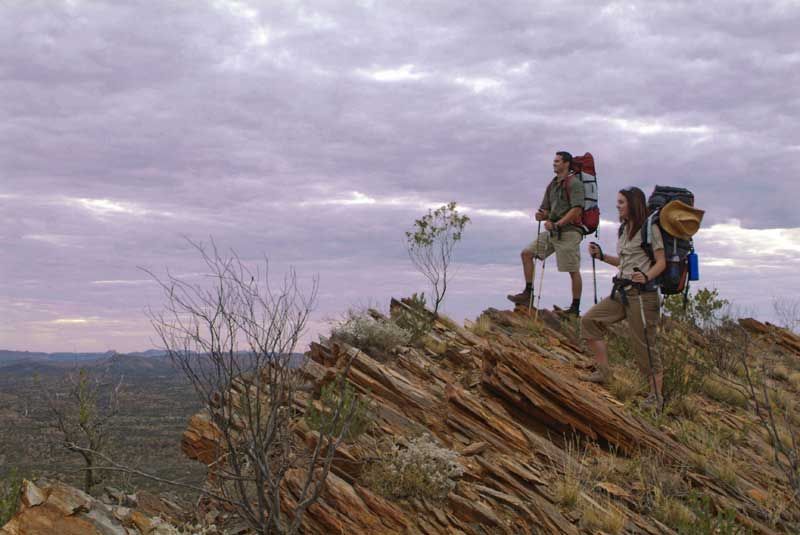
7. Preparing for Your Hike: Season-Specific Gear
Winter essentials
When hiking the Larapinta Trail in winter, pack:
- Warm, insulating layers (merino wool or synthetic materials)
- A quality sleeping bag rated for near-freezing temperatures
- Waterproof and windproof outer layers
- Gloves and a warm hat
- Sturdy, waterproof hiking boots
Spring and autumn versatile clothing
For the milder seasons, focus on versatile clothing:
- Lightweight, long-sleeved shirts and pants (for sun protection)
- A light fleece or jacket for cooler mornings and evenings
- Convertible hiking pants
- A wide-brimmed hat
- Comfortable, broken-in hiking boots
Summer sun protection and cooling equipment
Summer hikers should prioritize sun protection and cooling gear:
- UPF 50+ rated long-sleeved shirts and pants
- A broad-brimmed sun hat with neck protection
- High-quality sunglasses
- Cooling neck wraps or bandanas
- Lightweight, breathable hiking shoes
- A hydration system with a large capacity
Summary
The Larapinta Trail offers unique experiences across all seasons, each with its own challenges and rewards. Winter provides cooler temperatures and blooming wildflowers but requires preparation for cold nights. Spring and autumn offer milder conditions, ideal for most hikers. Summer, while challenging due to extreme heat, can be tackled with proper planning and precautions. Regardless of when you choose to hike, adequate preparation, respect for the environment, and an understanding of the seasonal conditions are key to a safe and enjoyable experience on this iconic Australian trail.
FAQs
Is it safe to hike the Larapinta Trail alone?
While it's possible to hike the Larapinta Trail solo, it's generally recommended to hike with a companion or group for safety reasons. The remote nature of the trail and potential for extreme weather conditions make it advisable to have support. If you do choose to hike alone, ensure you have a reliable communication device and inform others of your plans.
How long does it take to complete the entire trail?
The complete Larapinta Trail spans 223 kilometers and typically takes between 14 to 16 days to complete for most hikers. However, the time can vary depending on your fitness level, the season, and whether you're tackling the entire trail or specific sections.
Are there guided tours available for the Larapinta Trail?
Yes, several companies offer guided tours of the Larapinta Trail. These range from fully supported walks with comfortable accommodation to more rugged camping experiences. Guided tours can be an excellent option for those unfamiliar with the area or looking for a more structured hiking experience.
What's the best way to manage water supplies on the trail?
Water management is crucial on the Larapinta Trail. Carry more water than you think you'll need, and always treat water from natural sources before drinking. Many hikers use a combination of water caches (pre-placed water supplies), natural water sources, and tanks at designated campsites. Always check the latest water reports before your hike, as availability can change seasonally.
Are there any sections of the trail closed during certain seasons?
While the Larapinta Trail is generally open year-round, certain sections may be closed temporarily due to extreme weather conditions, maintenance, or cultural reasons. It's essential to check with the Northern Territory Parks and Wildlife Service for the most up-to-date information before your hike. During summer, some sections may be unofficially "closed" due to extreme heat, making them unsafe for hiking.




